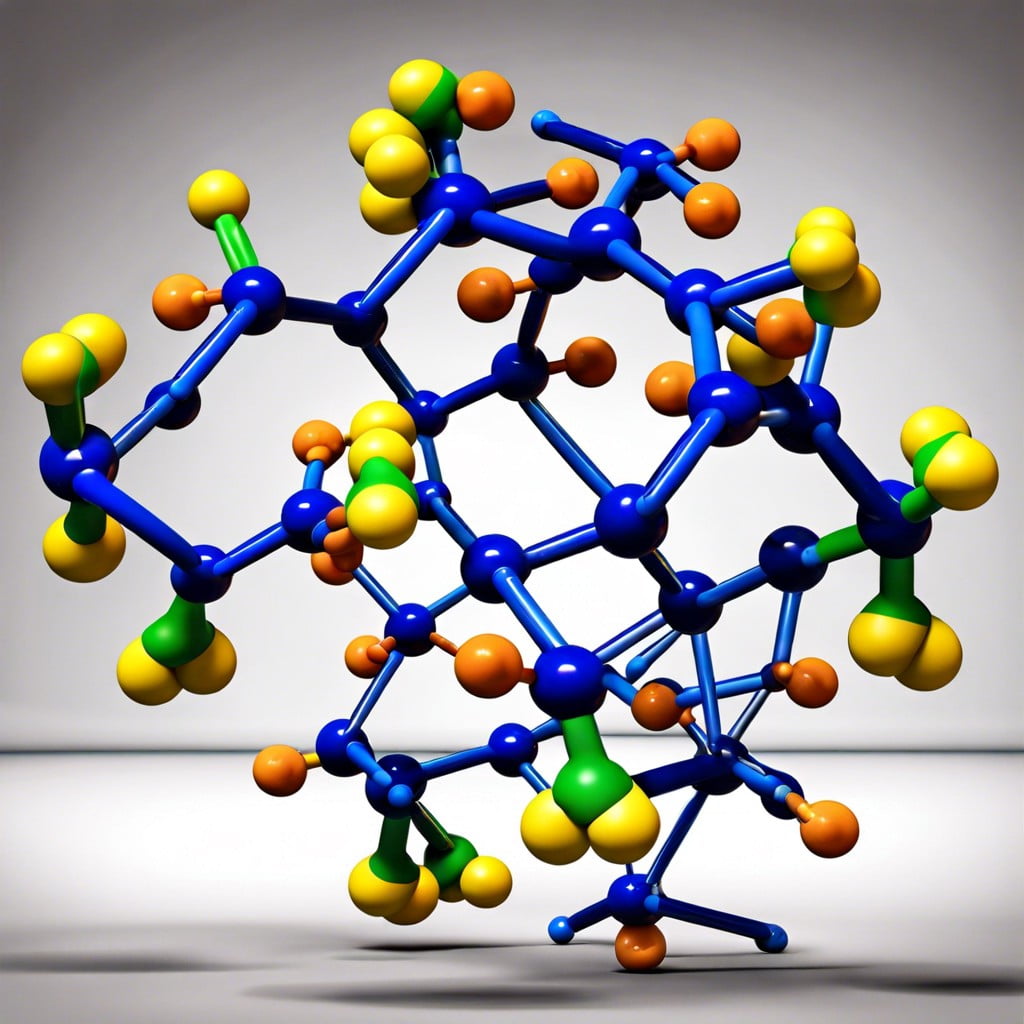Discover how nucleotide polymers form the backbone of DNA and RNA, allowing them to perform essential functions in our cells.
Key takeaways:
- Nucleotide polymers are the building blocks of DNA and RNA.
- They have a structure consisting of sugar, phosphate, and nitrogenous bases.
- Nucleotide polymers store genetic information, synthesize proteins, and transmit cellular messages.
- Synthetic nucleotides have medical applications in targeting genetic diseases, diagnostics, and vaccine development.
- Future prospects include drug delivery, gene therapy, and synthetic biology advancements.
Definition of Nucleotide Polymer

Imagine a LEGO set where the blocks are the building blocks of life itself; that’s essentially what nucleotide polymers are. These are long chains made up of smaller units called nucleotides, which are the fundamental components of DNA and RNA. Each nucleotide contains three parts: a phosphate group, a sugar molecule (deoxyribose in DNA and ribose in RNA), and a nitrogenous base (adenine, thymine, cytosine, guanine for DNA; adenine, uracil, cytosine, guanine for RNA).
The order of these nucleotides in the chain forms the genetic code of living organisms, instructing cells how to behave, grow, and reproduce. Think of it as the biological version of computer code, but instead of zeroes and ones, it uses four different molecules strung in a variety of ways to direct cellular operations.
DNA polymers are double-stranded, with each strand serving as a template for the other, which is why DNA can replicate itself so accurately. RNA, on the other hand, is usually single-stranded and acts more like a messenger, carrying instructions from DNA to other parts of the cell. Its mission? To synthesize proteins vital for life functions.
Structure and Synthesis of Nucleotide Polymers
Nucleotide polymers, including the all-stars like DNA and RNA, have a backbone structure that consists of sugar and phosphate groups. Each sugar attaches to a phosphate group of the next nucleotide in line, creating a sugar-phosphate chain. Sprouting from each sugar is a nitrogenous base, which is crucial for the genetic coding magic.
The synthesis part? It’s a bit like Legos. Nucleotides are joined together by enzymes in a process called polymerization. These enzymes are meticulous workers—like tiny molecular-level construction foremen—ensuring that nucleotides link correctly to form a stable, functional chain.
These structures aren’t just floating around randomly. In DNA, the bases pair up across the strands forming those iconic double helices—think of them as biological spiral staircases. RNA, however, often single-stranded, folds into various shapes crucial for its roles, embodying the mantra of “form follows function.”
This structure and its method of synthesis allow nucleotide polymers to play their pivotal roles in genetic storage, transmission, and overall cell operations. Essentially, without this organized structure and crafty synthesis, life’s instruction manual would be more like a pile of unassembled IKEA furniture parts!
Functions of Nucleotide Polymers in Cells
Nucleotide polymers are like the Swiss Army knives of molecular biology. They multitask in cells, ensuring everything runs smoothly. Here’s a quick breakdown of their key roles:
– Genetic Storage: They take charge of storing genetic information in the form of DNA. Think of them as high-tech biological hard drives.
– Protein Synthesis: They play a crucial role in making proteins through RNA. It’s like following a recipe to whip up a molecular feast.
– Cellular Messaging: Acting as messengers, they help in transmitting genetic info within a cell. Picture them as the cell’s postal service, always delivering important mail on time.
– Regulation and Repair: They also get involved in repairing and regulating genes. They’re the maintenance crew that keeps everything in tip-top shape.
By juggling these roles, nucleotide polymers ensure that cells function properly and life goes on as smoothly as possible.
Medical Applications of Synthetic Nucleotides
Synthetic nucleotides are more than just tiny molecular magicians in the vast world of biology; they play crucial roles in medicine, too. One key application is in the creation of novel drugs aimed at targeting genetic diseases. By tweaking specific nucleotide sequences, researchers can potentially turn off the genes responsible for these conditions, acting like a molecular switchboard operator who decides which genes get a time-out.
Another exciting application is in diagnostic tools. By using synthetic nucleotides that bind to specific DNA sequences in a patient’s genome, doctors can pinpoint diseases at a genetic level. Imagine a high-tech detective capable of sniffing out the slightest genetic clue to solve the mystery of a patient’s ailment.
Not stopping there, synthetic nucleotides also shine in vaccine development. By inserting specific nucleotides into a vaccine, scientists can help the body recognize and combat viruses more effectively. Think of it like updating your phone’s software to defend against the latest cyber threats.
These applications of synthetic nucleotides could drastically change how we approach treatment and prevention of diseases. By diving deep into our genetic material, they offer a glimpse of a future where medicine is personalized, precise, and profoundly potent.
Future Prospects in Nucleotide Polymer Technology
Exciting advancements lie ahead in the world of nucleotide polymer technology. Researchers are harnessing these molecules to innovate in fields like drug delivery and genetic engineering.
Imagine tiny molecular “mail carriers” that can deliver drugs precisely where they’re needed in the body. Nucleotide polymers are the perfect candidates for this, thanks to their ability to be engineered to bind specifically to certain cells. This could minimize side effects and increase the effectiveness of treatments.
In genetic engineering, these polymers could play a crucial role in gene therapy. They could potentially correct genetic disorders by editing genes directly in a patient’s DNA. This isn’t just science fiction—early experiments have shown promising results.
Furthermore, the field of synthetic biology might see a revolution with nucleotide polymers. Scientists could potentially create entirely new biological systems or organisms. This could lead to breakthroughs in how we produce everything from medicines to materials.
As research progresses, the potential applications of nucleotide polymers continue to expand, promising a future where medicine and biology are significantly more personalized and efficient.
Recap




